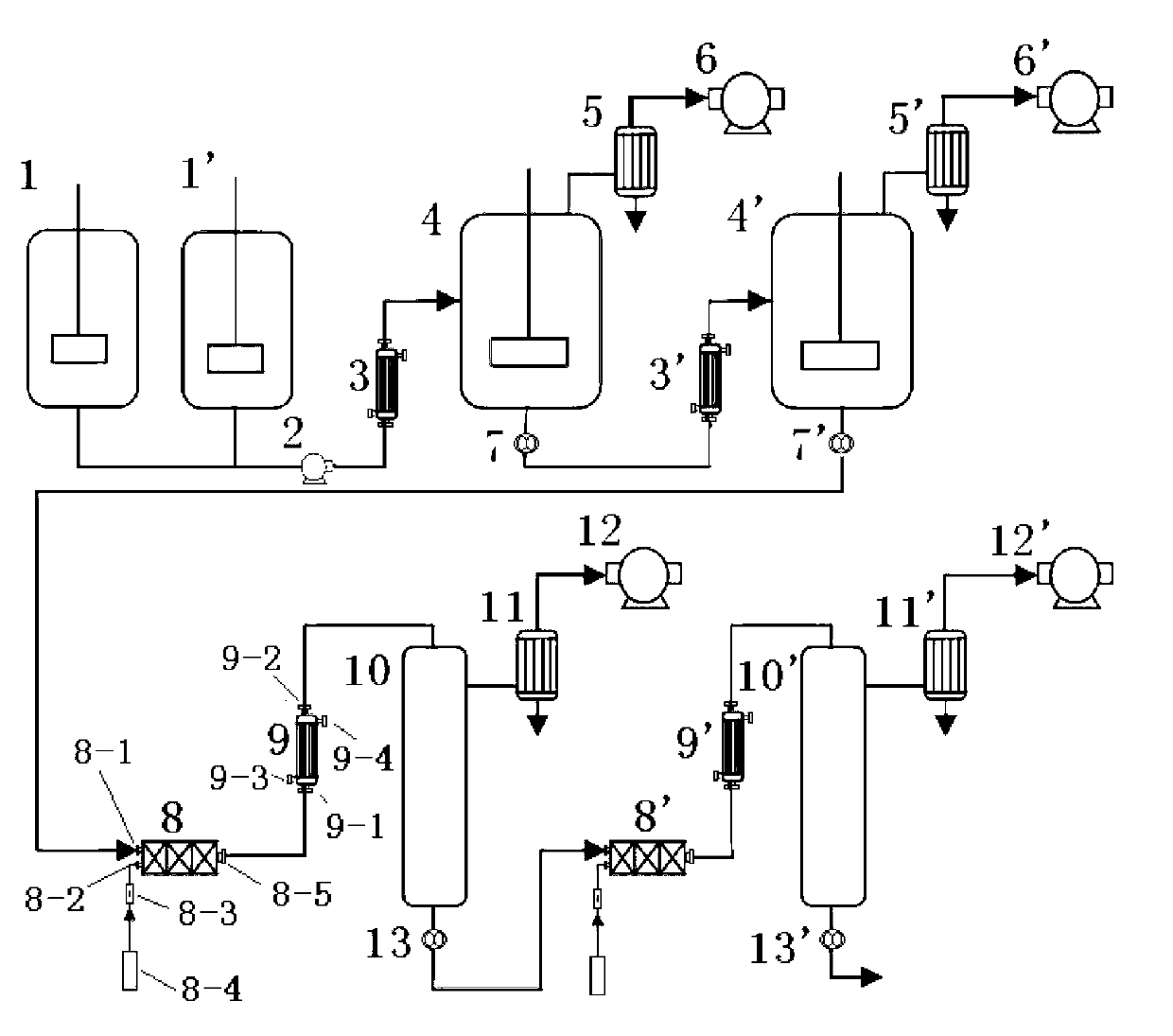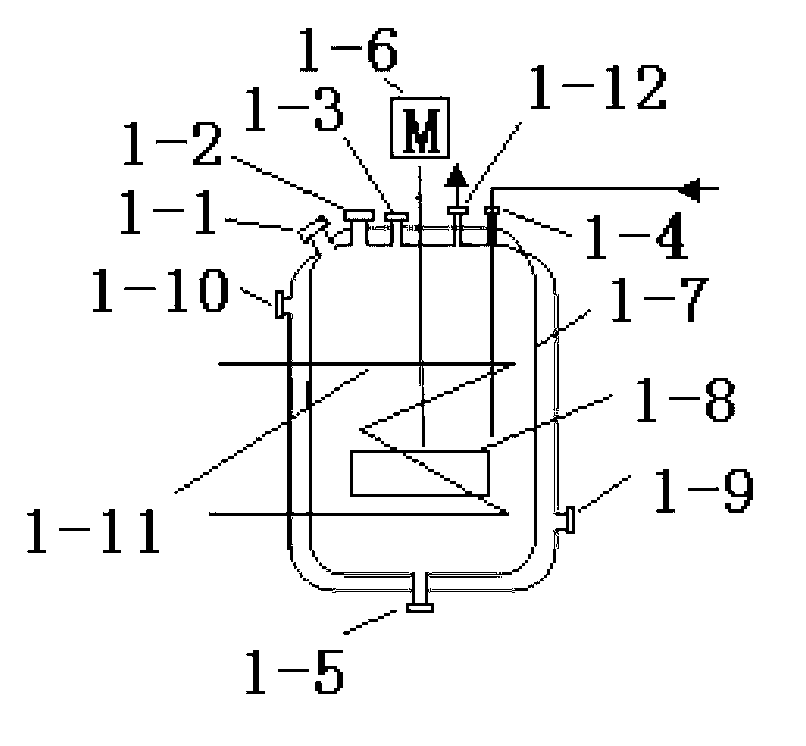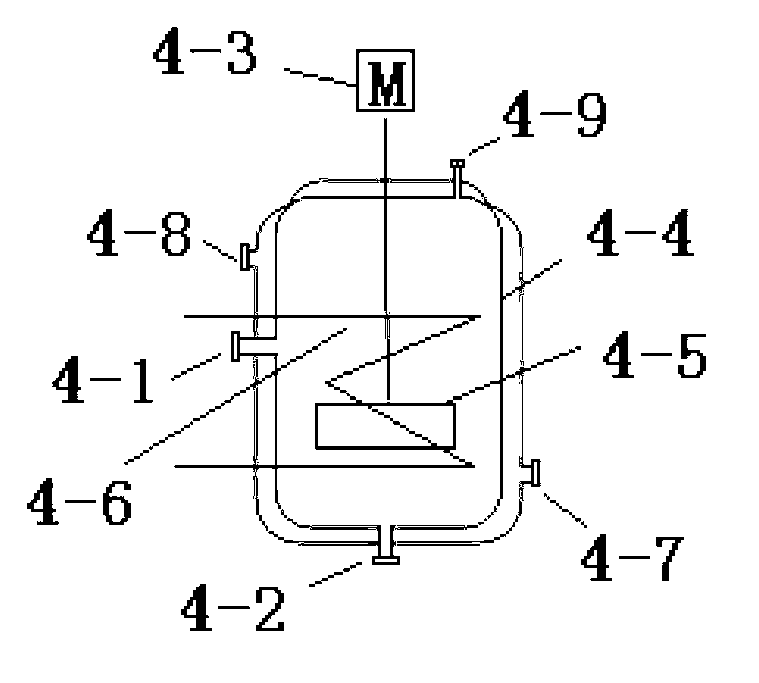Preparation method of aromatic polycarbonate
A polycarbonate and aromatic technology, used in the field of preparing aromatic polycarbonate, can solve the problems of difficult separation and removal of by-products and organic solvents, safety and environmental pollution, and difficulty in large-scale production.
- Summary
- Abstract
- Description
- Claims
- Application Information
AI Technical Summary
Problems solved by technology
Method used
Image
Examples
Embodiment 1
[0109] Embodiment 1: Preparation of aromatic polycarbonate
[0110] Use as attached figure 1 , attached figure 2 , attached image 3 with attached Figure 4 The polymerization apparatus shown produces aromatic polycarbonate products.
[0111] In this example, the polymerization reaction apparatus used is as attached figure 1 shown. The polymerization reaction device includes two alternately used raw material melting and mixing tanks 1 and 1', a melting raw material delivery pump 2, a primary prepolymerization preheater 3, a primary stirred tank type prepolymerization reactor 4, a primary volatile By-product condenser 5, primary prepolymerization vacuum pump 6, primary prepolymerization gear pump 7, secondary prepolymerization preheater 3', secondary stirred tank prepolymerization reactor 4', secondary volatile byproduct condensation 5', two-stage pre-polymerization vacuum pump 6', two-stage pre-polymerization gear pump 7', one-stage deep polymerization static mixer 8, o...
Embodiment 2
[0140] Embodiment 2: Preparation of aromatic polycarbonate
[0141] Diphenyl carbonate and bisphenol A are used as raw materials, the molar ratio of the two is 1.12, potassium hydroxide is used as a catalyst, and the dosage is 0.000008% based on the total weight of the raw material mixture.
[0142] The reaction conditions are as follows: the reaction conditions of the primary prepolymerization reactor are temperature 210°C and absolute pressure 9KPa; the reaction conditions of the secondary prepolymerization reactor are temperature 250°C and absolute pressure 3KPa;
[0143] The operating conditions of the first-stage deep polymerization static mixer are temperature 250°C and the nitrogen intake 0.3NL / kg; the operating conditions of the first-stage deep polymerization heat exchanger are temperature 255°C; the operating conditions of the first-stage multi-stage diversion falling film polycondensation reactor are The temperature is 255°C and the absolute pressure is 0.5Kpa.
[...
Embodiment 3
[0148] Embodiment 3: Preparation of aromatic polycarbonate
[0149] Diphenyl carbonate and bisphenol A are used as raw materials, the molar ratio of the two is 1.12, potassium hydroxide is used as a catalyst, and the dosage is 0.000008% based on the total weight of the raw material mixture.
[0150] The reaction conditions are as follows: the reaction conditions of the primary prepolymerization reactor are temperature 220°C and absolute pressure 9KPa; the reaction conditions of the secondary prepolymerization reactor are temperature 260°C and absolute pressure 3KPa; the operating conditions of the primary deep polymerization static mixer are temperature 260 ℃ and nitrogen feed 0.3NL / kg; the operating condition of the first-stage deep polymerization heat exchanger is a temperature of 265°C; the operating condition of the first-stage multi-stage diversion falling film polycondensation reactor is a temperature of 265°C and an absolute pressure of 0.5Kpa.
[0151] The operating co...
PUM
| Property | Measurement | Unit |
|---|---|---|
| diameter | aaaaa | aaaaa |
| length | aaaaa | aaaaa |
| diameter | aaaaa | aaaaa |
Abstract
Description
Claims
Application Information
 Login to View More
Login to View More - R&D
- Intellectual Property
- Life Sciences
- Materials
- Tech Scout
- Unparalleled Data Quality
- Higher Quality Content
- 60% Fewer Hallucinations
Browse by: Latest US Patents, China's latest patents, Technical Efficacy Thesaurus, Application Domain, Technology Topic, Popular Technical Reports.
© 2025 PatSnap. All rights reserved.Legal|Privacy policy|Modern Slavery Act Transparency Statement|Sitemap|About US| Contact US: help@patsnap.com



